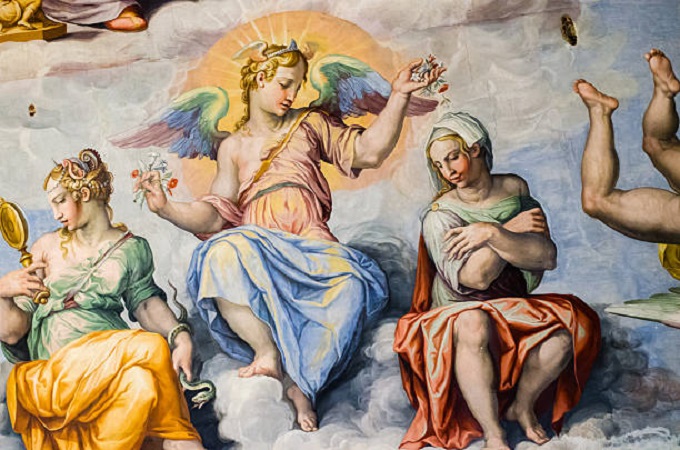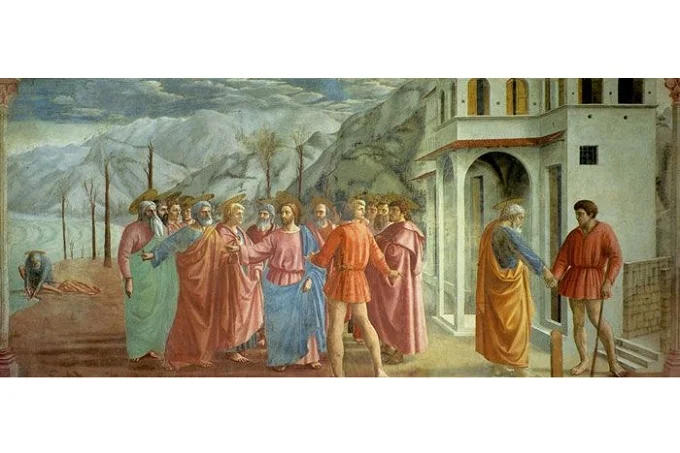Medieval art

Medieval art contains a vast period and space throughout the Western world, spanning more than 1000 years of art in Europe and, at various points in history, in Western Asia and Northern Africa. It encompasses important art movements and eras, national and regional art, genres, revivals, the artists’ crafts, and the artists themselves. It also includes the artists themselves.
Medieval art evolved from simple book miniatures and icons to magnificent paintings by Italian masters.
Church interiors and book miniatures

The earliest efforts by new communities (populations of barbarian countries) to beautify their new constructions and temples under the influence of Roman heritage started in the fifth century. This was especially true in Byzantium. Early medieval manuscripts, which were mostly created in monastic scriptoriums, demonstrate the emergence of a strange style of visual art that combines writing and painting. It’s all about book miniatures here.
Charlemagne’s chronicles, annals, and capitulars feature strange representations that provide current researchers with a window into the past. Later miniatures were added to the Annals of Lorsch, the Annals of the Kingdom of the Franks, and Einhard’s Life of Charlemagne. Icon painting flourished in early medieval Byzantium but suffered immensely due to the Iconoclastic heresy development in the eighth century.
The art of book miniatures and monumental paintings flourished under the rule of the Saxon dynasty in Germany, which became the Holy Roman Empire in the 10th century. The paintings in the Oberzell church of St George on Reichenau’s island give testament to this. They are, in reality, replicas of the pictures that decorated the local monastery’s manuscript pages.

Trier and Cologne, Germany’s ecclesiastical cities, headed in the same direction. The restoration of the empire allowed for cultural interchange with both the Italian territories and Byzantium. Monasteries that became vehicles for new artistic movements flourished along the Rhine and Danube, drawing ecclesiastics across Christendom.
This art arrived in French areas later. However, France would subsequently become the origin of the new art style.
The Gothic style and the beginning of the Renaissance art
We might argue that the earliest efforts at painting arose in medieval Europe towards the end of the 12th century. The Gothic style reigned in France during the period, bringing cultural changes. Masters progressively deviated from the Romanesque style’s universally acknowledged canons, characterized by severity. Images become more three-dimensional and realistic. Renaissance art would arise as a result of these goals.

Images made of coloured glass – stained glass windows – were often used to decorate Gothic buildings across Europe. They usually represented biblical topics and historical and even epic elements. St. Chappelle’s, Chartres’, Canterbury’s, and Cologne’s cathedral stained glass windows bear evidence of this.
The majority of artworks from that period complemented the church decorations. From the 14th century forward, several types of diptychs and triptychs were used to adorn church altars, depending on the internal design of each temple.

The visual arts shifted from church paintings and interiors in the 12th and 13th centuries to the secular domain of public life. The town officials were not sparing with church altarpieces, entrusting their work to famous artisans. A steady shift toward realism occurred. In this regard, the Italian countries were ahead of the pack.
Cimabue and Duccio, late-13th-century Italian masters, were among the first to make this move. The Madonna and Child altarpiece pictures represented the beginning of the visual realism tradition. Rich colours and light contrasts were used to create depth in the picture.
Giotto di Bondone, a Florentine maestro, went much further: his masterpieces were renowned during his lifetime. Many works by the author and his collaborators Simone Martini and Lorenzetti, on the other hand, remained unsigned. Anonymity was preserved throughout. Giotto’s works were decorating churches and chapels in Padua, Florence, and the Vatican. Although not all of his works were well-received, many of them were ahead of their time. His figures can walk and stand firmly on the ground in his paintings. They have emotions and sensations. The works of these masters are attributed to the Proto-Renaissance by historians.
At the turn of the 14th and 15th centuries, masters from France and the Netherlands delved deeply into the spectator’s presence effect, which was created by the use of light and picture frames. According to art historians, many painters started to work at the courts of European kings and nobles during this period, when they established an almost uniform style of painting known as the international Gothic. The court was shown more sophisticatedly but with a less realistic feel. At the same time, the characters’ poses and the details of their entourage were filigreed.

In this regard, one might consider Paul, Herman, and Jean de Limbourgs, who worked under the patronage of Duke Jean of Berry, a prominent art collector, in the early 15th century. The Limbourg brothers created the whimsical ” Très Riches Heures du Duc de Berry” – the crown of their creation and one of the main works of medieval art. Seasonal miniatures portray scenes from aristocratic and ordinary life in medieval times, such as hunting and feasting, harvesting, and planting.

The art of the 15th century in Italy provided a great impetus for Europe’s cultural growth. It would subsequently pave the way for the development of a new age, known as the Renaissance or Renaissance by historians. Frescoes, diptychs and paintings by Piero Della Francesca, Sandro Botticelli, and Masaccio were known in their native Florence and outside one of the largest Italian cities of the Middle Ages. Under the cultural influence of the south, the north was able to contribute several works of art to the world.
The portraitist Jan van Eyck and his younger contemporary Rogier van der Weyden were the best exponents of the Flemish school of painting in this period. The portrayal skill improved, and the themes of the paintings expanded to incorporate both religious symbols and completely secular scenarios.




